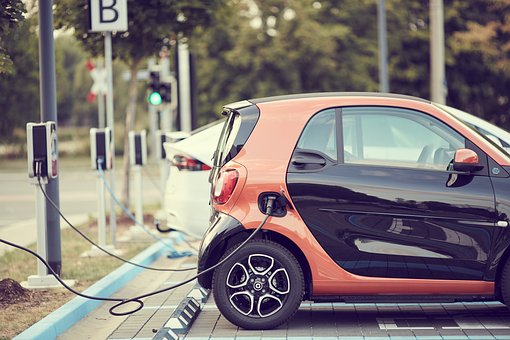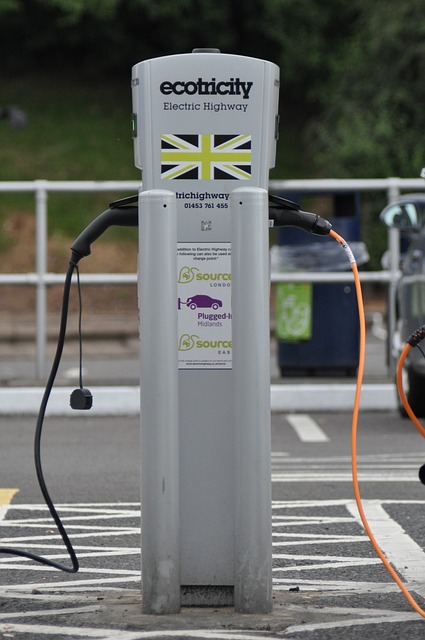Electric vehicles (EVs) charging stations are becoming increasingly popular due to their environmental benefits and cost-saving advantages. As more people switch to EVs, the demand for charging stations is also increasing. In this blog post, we will discuss everything you need to know about EV charging stations, including types, locations, and their future prospects.

What is an Electric Vehicle Charging Station?
An Electric Vehicle Charging Station (EVCS) is a device that allows you to charge your car’s battery by plugging it into an outlet. It can be installed at home or in public places, like restaurants and shopping centers.
What are the Benefits of Electric Vehicle Charging Stations?
Electric vehicle charging stations are an important part of the infrastructure that supports electric vehicles. If you’re considering buying an electric car, it’s important to know about these benefits and how they can help your bottom line. These can be found at home, work and public locations such as shopping malls or restaurants. They charge your car’s battery by plugging into a wall socket. You don’t need to stop at gas stations anymore!
Should you Install Electric Vehicle Charging Stations?
You may be wondering if it’s worth the investment to install an electric vehicle charging station. The answer is a resounding yes! Here are just a few of the benefits:
Cost-Savings – An electric vehicle charging station can save you money in several ways.
- Firstly, you won’t have to spend as much on fuel or maintenance for your car because electricity is cheaper than gasoline or diesel fuel.
- Second, if your employer provides a subsidy for installing an electric vehicle charging station at work, then this could offset some of the cost of purchasing one yourself (depending on how much they offer).
- Thirdly–and perhaps most importantly–you’ll never have to visit another gas station again!
- As per a latest article in The New York times, about 80 percent of new cars sold in Norway are battery-powered. As a result, the air is cleaner and the streets are quieter. read the full article here: https://www.nytimes.com/2023/05/08/business/energy-environment/norway-electric-vehicles.html
How to instal Electric Vehicle Charging Stations?
Step 1: Determine the type of charging stations you need
First, consider your needs and how many vehicles will be charging at once. If you only have one car and don’t plan on adding more anytime soon, then a smaller model may be sufficient for your needs. However, if you have several cars or plan on buying another one in the future then it is better to get something larger so that everyone has access when needed.
Next comes research: look at different models and find out which ones offer features such as timers or remote control capabilities (if applicable). Also look at what kind of power supply they use–some might require 240-volt connections while others only need 120 volts; this can affect where exactly they’re installed because some places won’t have enough power capacity available nearby! Before you begin the installation process, you must first determine the type of charging station that best suits your needs.
There are three types of stations where EVs can be charged:
Level 1: These charging stations are the slowest and least expensive to install. They use a standard 120-volt household outlet and take around 8 to 12 hours to charge an EV.
Level 2: These charging stations require a dedicated 240V circuit and can fully charge an EV in 4 to 8 hours.
DC Fast Charging: These are the fastest charging stations and require a higher voltage and specialized equipment to install. They can charge an EV up to 80% in just 20-30 minutes.
Step 2: Determine the location for the Electric vehicle charging stations
The next step is to determine the location for the charging station. Ideally, the charging station should be located near the parking spot where the EV will be parked. The location should also be easily accessible and should not obstruct pedestrian traffic.Choosing a convenient location is of upmost importance.
- Residential charging stations – for home use, usually Level 2
- Workplace charging stations – for employees to charge their EVs during work hours
- Public charging stations – located in public areas such as parking lots, malls, and roadside rest areas.if you are in search of a charging station near your location, check out this link where you get the details of places in india where this facility is currently available. https://www.cardekho.com/electric-charging-station
Step 3: Obtain necessary permits and approvals
Before installing the charging station, you must obtain the necessary permits and approvals from your local municipality. This may include obtaining a building permit, electrical permit, and zoning approval.
Step 4: Install the charging stations
Once you have obtained the necessary permits, you can begin the installation process. If you are installing a Level 1 or Level 2 charging station, you will need to hire a licensed electrician to install a dedicated circuit and outlet. If you are installing a DC fast charging station, you will need to hire a specialized contractor who is experienced in installing this type of equipment.

Step 5: Test and commission the charging station
After the installation is complete, you should test the charging station to ensure that it is functioning properly. This may include checking the electrical connections, verifying the charging rate, and testing the EV’s charging capabilities.
Step 6: Maintenance and support
To ensure that your charging station continues to function properly, it is important to perform regular maintenance and inspections. This may include checking the electrical connections, cleaning the charging cables, and testing the charging rate.There are three main types of electric vehicle charging stations connectors: J1772, Chademo,Tesla.
How to Maintain Electric Vehicle Charging Stations?
To maintain your electric vehicle charging station, you should:
- Regularly inspect the station. Inspect the charging equipment and power source to ensure that it’s working properly and not damaged in any way. Make sure all connections are secure, and check for loose or broken wires or other signs of damage.
- Monitor usage and performance. Keep track of how many times a year people use their EVCSs, as well as how long they charge for each time they do so (this will help you determine whether or not you need more than one). Also keep an eye out for any problems with your system–if there are too many malfunctions due to poor maintenance or faulty wiring, then this may indicate that there’s something wrong with either your station itself or its installation location!
What are the Safety Considerations for Electric Vehicle Charging Stations?
- Ensure Proper Ventilation: The charging station should be installed in an area that has proper ventilation, such as a garage or carport.
- Avoid installing the charging station in areas where it will be exposed to direct sunlight and rainwater. This will prevent overheating of your EV’s battery pack and reduce risk of fire or injury from electrical shock.
- Use the Appropriate Cables: When using electric vehicle charging stations, make sure you use only cables approved by your manufacturer.
- Avoid Overheating: Always check for signs of overheating before plugging in your car; if you notice any heat coming off of either end of the cord itself or if there are sparks coming out from under where it plugs into your vehicle’s receptacle (also known as “plug”), unplug immediately!
Conclusion
Electric vehicle charging stations are a convenient and cost-effective way to recharge electric vehicles. They offer environmental benefits, as well as several different types of charging stations available. EVs are the future of transportation, and EV charging stations are the backbone of the EV infrastructure. As more people switch to EVs, the demand for charging stations will increase. In addition, new technologies such as wireless charging and smart grid systems will make it easier to charge EVs.
Wireless charging eliminates the need for cables, while smart grid systems will enable EV owners to charge their cars during off-peak hours when electricity is cheaper. Governments and private companies are investing in the installation of EV charging stations and promoting the use of EVs by offering incentives, tax breaks, and subsidies, making it easier for people to own and operate EVs.
With new technologies on the horizon, the future of EV charging stations looks bright.
Also read: https://thegreenlivingrevolution.com/7-ideas-for-sustainable-home-decor/
Disclaimer: We may earn referral/affiliate fees when you buy services or products from companies that we recommend. As an Amazon Associate, I earn from qualifying purchases. When you click and make a purchase through the links on this blog, I earn a commission, at no extra charge to you.


Thanks for sharing. I read many of your blog posts, cool, your blog is very good.